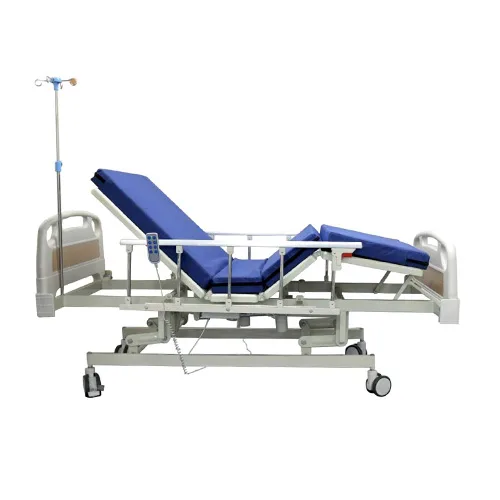Адрес
304 North Cardinal St.
Дорчестер-центр, Массачусетс 02124
Часы работы
С понедельника по пятницу: с 7:00 до 19:00.
Выходные: 10.00 - 17.00
Добро пожаловать в мой блог!
Прежде чем мы погрузимся в контент, я бы хотел, чтобы вы присоединились ко мне на моих платформах социальных сетей, где я делюсь большим количеством идей, взаимодействую с сообществом и публикую обновления. Вот как вы можете связаться со мной:
Фейсбук:https://www.facebook.com/profile.php?id=100071234835011
LinkedIn:https://www.linkedin.com/company/74943205/admin/dashboard/
Ютуб:www.youtube.com/@shandongexpertmedicalequip4695
ТикТок:www.tiktok.com/@expertmedical
Теперь давайте начнем наше путешествие вместе. Надеюсь, вы найдете здесь контент проницательным, интересным и ценным.

In today’s fast-paced healthcare environment, every square foot counts and every patient comfort measure matters. That’s why small hospital beds have emerged as a strategic investment for clinics, specialty centers, and space-constrained hospitals. These beds are specifically engineered to offer full adjustability, reliable safety features, and compact footprints—without compromising on quality or performance. Whether you operate an ICU unit in a metropolitan hospital or a remote-care facility with limited real estate, choosing the right small hospital beds can significantly enhance both efficiency and patient satisfaction.
At Expert—an innovative high-tech enterprise dedicated to the research, development, production, and global distribution of OR & ICU equipment and medical devices—we understand the critical role that bed design plays in clinical outcomes. In this guide, we’ll explore why investing in small hospital beds makes sense from a patient-care, operational, and financial perspective.
Quality of care hinges on the ability to tailor the clinical environment to individual patient needs. Small hospital beds offer healthcare providers unprecedented flexibility in room layout, enabling seamless integration of life-support equipment, imaging systems, and mobile workstations. By reducing the overall footprint, these beds free up space for additional diagnostic tools or even simple amenities such as a visitor chair, thus creating a more comfortable and efficient care setting.
Moreover, the trend toward private rooms and single-occupancy units has placed a premium on space-efficient furniture. Clinics and recovery suites must balance patient privacy with access to nursing stations and monitoring systems. Small hospital beds deliver this balance by allowing for easy navigation of hallways and doorways, ensuring safe transport and transfer of vulnerable patients. For hospital administrators, the ability to maximize bed count without major renovations translates into improved revenue per square foot.

Patient comfort goes beyond a soft mattress; it encompasses ease of repositioning, access to controls, and confidence in safety features. Today’s small hospital beds boast multi-position articulations—head elevation, Trendelenburg, reverse Trendelenburg, and full-flat modes—that can be adjusted by either the patient or caregiver. This promotes circulation, relieves pressure points, and facilitates procedures such as wound care or respiratory therapy.
Incorporated into these beds are advanced cushioning systems that distribute weight evenly and reduce shear forces. Side rails with intuitive locking mechanisms ensure patients feel secure while permitting quick egress in emergencies. Even the height-adjustment settings are calibrated to allow seamless transition between lying and sitting, reducing the risk of falls and enhancing patient autonomy.
One of the standout advantages of small hospital beds is their maneuverability. Integrated 360° caster wheels with central locking systems enable caregivers to pivot the bed effortlessly, even through narrow corridors. This streamlined mobility reduces physical strain on staff and minimizes the time required to transfer patients between departments.
Adjustable frames also cater to diverse clinical scenarios—lowering to a height that facilitates safe lateral transfers to wheelchairs, or elevating for surgeons and nurses to perform bedside procedures with ergonomic ease. Intelligent electric controls, often accompanied by battery backup, ensure uninterrupted operation during power outages or emergency evacuation drills. All of these features converge to make small hospital beds indispensable in fast-moving OR and ICU settings.
In the middle of your facility layout considerations, a concise comparison of core features helps decision-makers evaluate the right small hospital beds for their needs. Below is a table highlighting critical design elements—without reference to specific brands—to guide your selection process:
| Характерная черта | Выгода |
|---|---|
| Adjustable Height Range | Facilitates transfers and ergonomic procedures |
| Integrated Side Rails | Enhances patient safety and fall prevention |
| Compact Footprint (Length × Width) | Maximizes usable floor space |
| Central Locking Casters | Streamlines mobility and secure positioning |
| Easy-Clean Surfaces | Reduces infection risk and maintenance downtime |
| Weight Capacity (kg) | Supports a broad patient demographic |
| Trendelenburg & Reverse Modes | Assists in surgical prep and respiratory therapy |
This overview underscores why small hospital beds are more than just scaled-down versions of standard beds—they’re purpose-built to optimize every inch of your care environment.

While the initial investment in small hospital beds may seem higher than conventional models, the long-term savings are substantial. Compact beds reduce the need for facility expansion, delaying or eliminating costly construction projects. Lower weight and smaller dimensions also translate into reduced shipping and handling expenses.
Maintenance costs drop when beds feature modular components: swappable motors, plug-and-play control panels, and standardized casters reduce service time and part inventories. Moreover, efficient use of floor space can boost patient throughput by enabling more rooms or treatment bays within the same square footage. When you calculate total cost of ownership—including energy consumption, cleaning downtime, and staff efficiency—the ROI on small hospital beds becomes clear.
At Expert, our focus on R&D and rigorous quality control ensures every small hospital bed meets—and often exceeds—international safety and performance standards. Our aluminum-reinforced frames undergo fatigue testing to replicate years of daily adjustments, while advanced polymer coatings resist corrosion and wear. We back these beds with comprehensive warranties and 24/7 technical support, so your OR & ICU operations remain uninterrupted.
Global distribution networks mean that replacement parts and service technicians are available in key markets worldwide. This level of support is particularly valuable for critical-care settings, where equipment downtime can have direct implications for patient outcomes. Trust in Expert’s proven track record to deliver rugged, reliable small hospital beds designed for the demands of modern healthcare.
Patient safety is paramount. That’s why small hospital beds must adhere to stringent regulations—UL listing for electrical safety, ISO 13485 for medical devices, and local healthcare authority approvals such as FDA 510(k) or CE marking. Features such as anti-crush mechanisms, emergency-release controls, and fail-safe locks are not luxuries; they’re requirements.
Beyond regulatory compliance, many institutions pursue accreditation from bodies like The Joint Commission or NABH. Choosing small hospital beds that facilitate audit readiness—through built-in usage logs and traceable maintenance records—can simplify the accreditation process. Expert’s beds include QR-coded documentation and cloud-based service tracking, ensuring your equipment always passes muster.
From bustling urban centers in North America to remote clinics in Southeast Asia, the demand for small hospital beds is on the rise. Population aging, space constraints, and a shift toward personalized care are driving growth. As a global supplier, Expert tailors its beds to diverse market needs—metric or imperial dimensions, voltage variations, and multilingual control interfaces.
We also partner with NGOs and government health ministries to supply beds for emergency response units and field hospitals. This adaptability underscores the universal value of small hospital beds: compact, reliable, and easy to maintain—even in austere environments.

In high-acuity areas such as ORs and ICUs, every feature of a bed directly impacts patient care and workflow. Small hospital beds with integrated mounting points for infusion pumps and monitoring systems reduce clutter and streamline setup. Low-profile designs facilitate rapid patient access for surgical teams, while detachable headboards allow quick imaging without patient transfer.
Moreover, the ability to shift between flat and Trendelenburg positions supports critical procedures—central line placements, bronchoscopy, or emergency thoracotomy. For nursing staff, intuitive controls minimize training time, and the beds’ robust construction withstands the rigors of 24/7 operation. In short, small hospital beds are the backbone of efficient, safe, and patient-centric ICU & OR environments.
Investing in маленькие больничные койки is a strategic decision that pays dividends in patient comfort, operational efficiency, and long-term cost savings. With Expert’s commitment to innovation, quality, and global service, your facility can leverage the full potential of these space-saving workhorses. Ready to transform your care environment? Связаться с нами today to explore our full range of small hospital bed solutions and discover how we can tailor them to your unique needs.
What are the standard dimensions of small hospital beds?
Small hospital beds typically range from 75 to 80 inches in length and 32 to 36 inches in width. Variations exist to accommodate specific room layouts and patient requirements.
Может маленькие больничные койки support bariatric patients?
Many models offer weight capacities up to 635 kg (1,400 lb). Always verify the bed’s specifications to ensure safe use with bariatric patients.
How often should small hospital beds be maintained?
Routine inspection is recommended every three months, with full preventive maintenance annually. Adhering to manufacturer guidelines helps avoid unexpected downtime.
